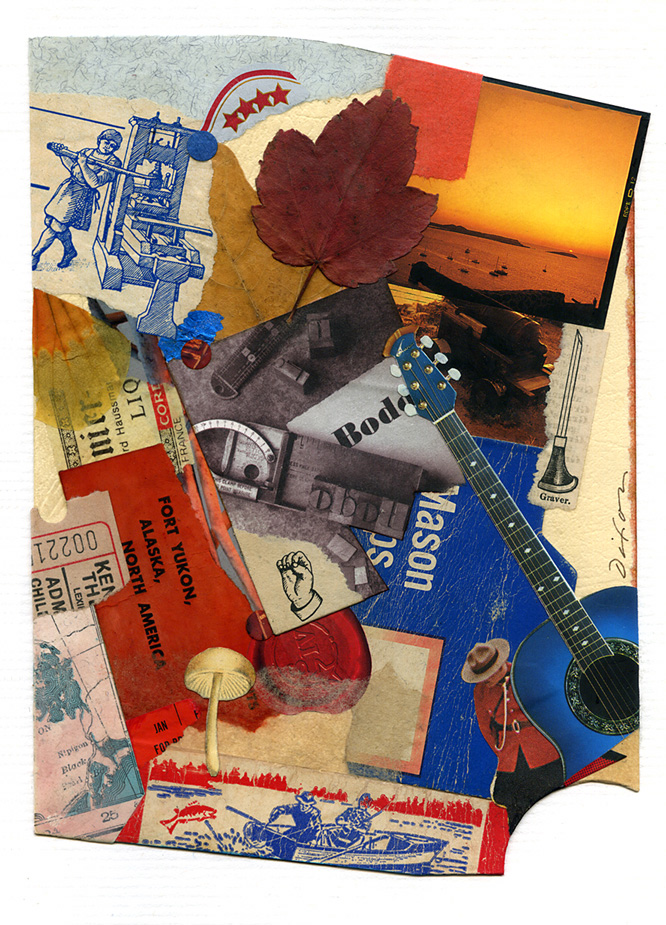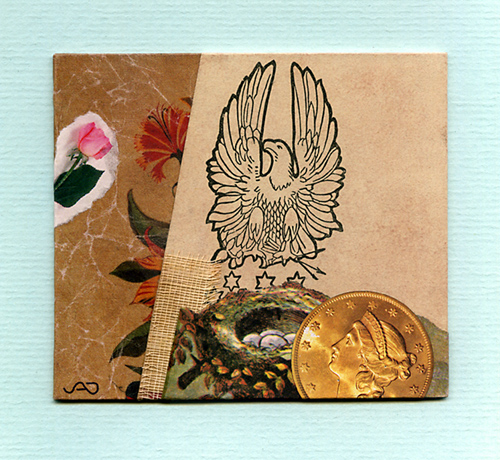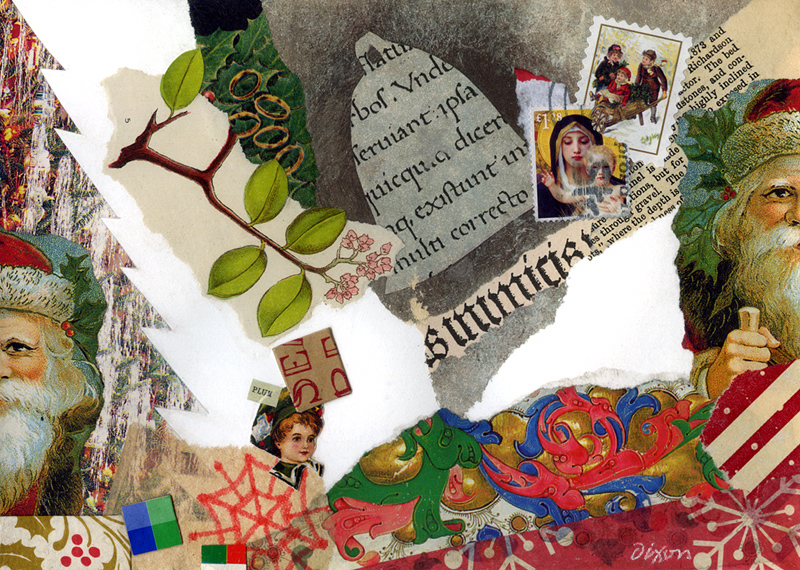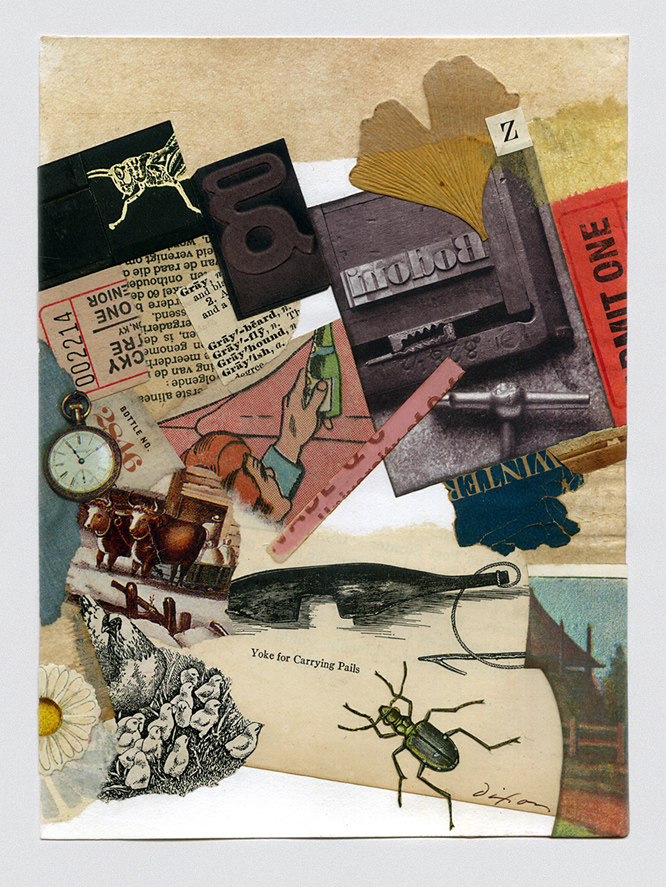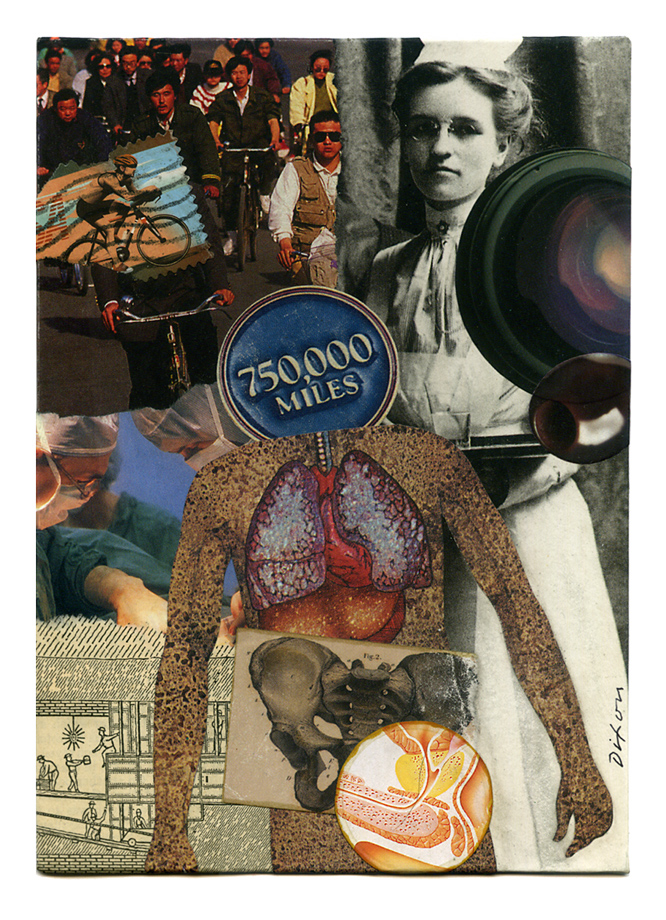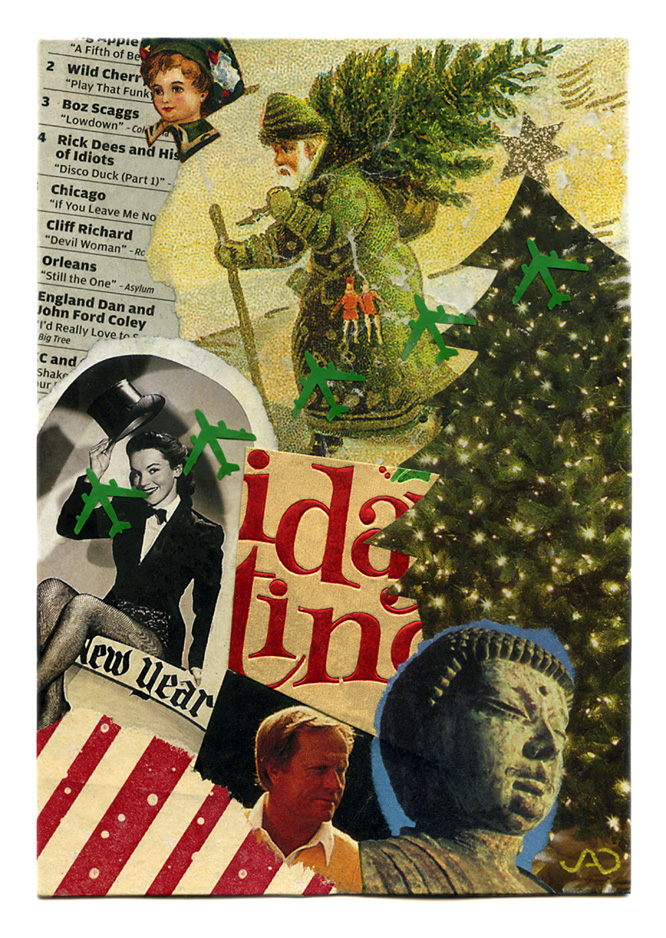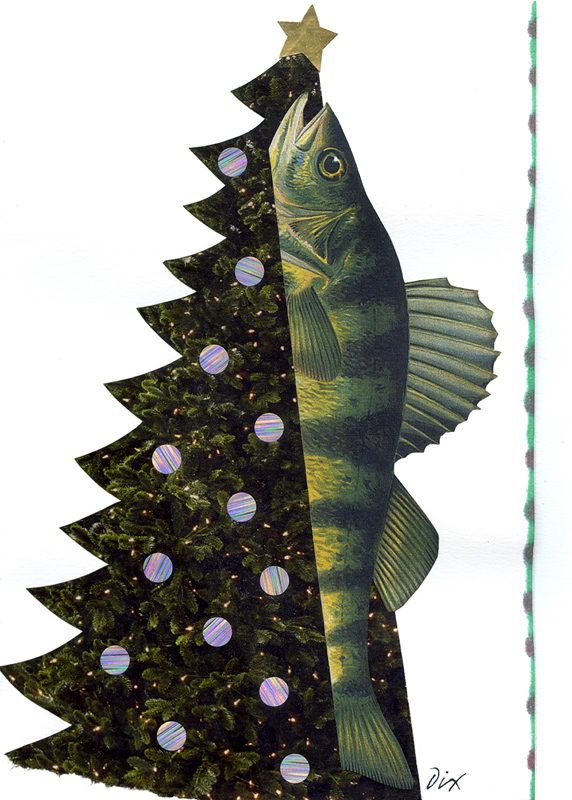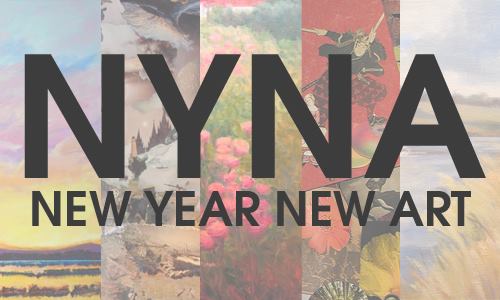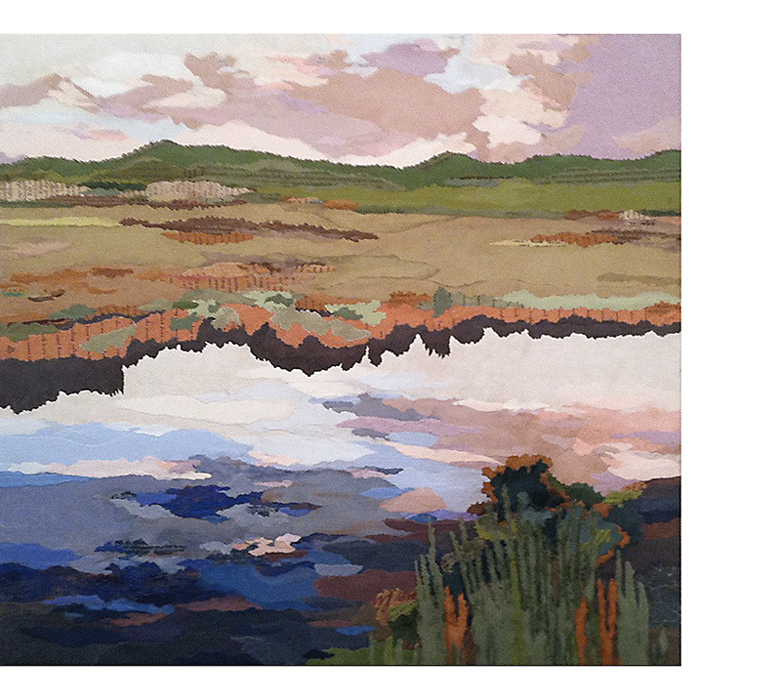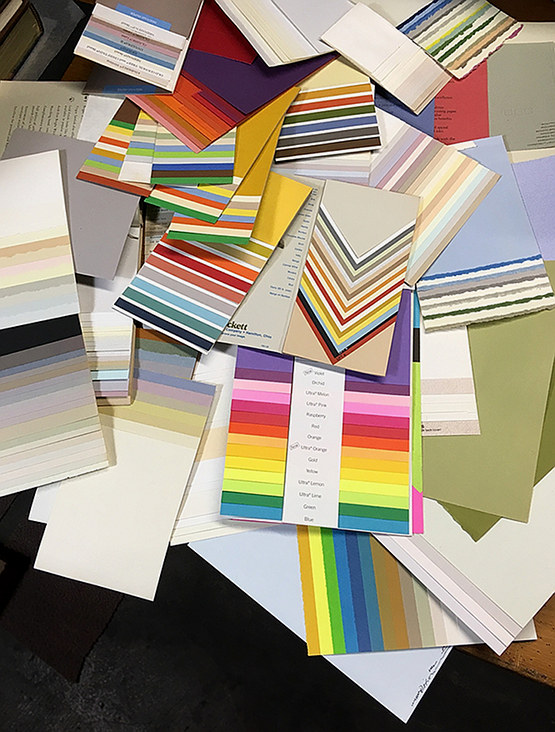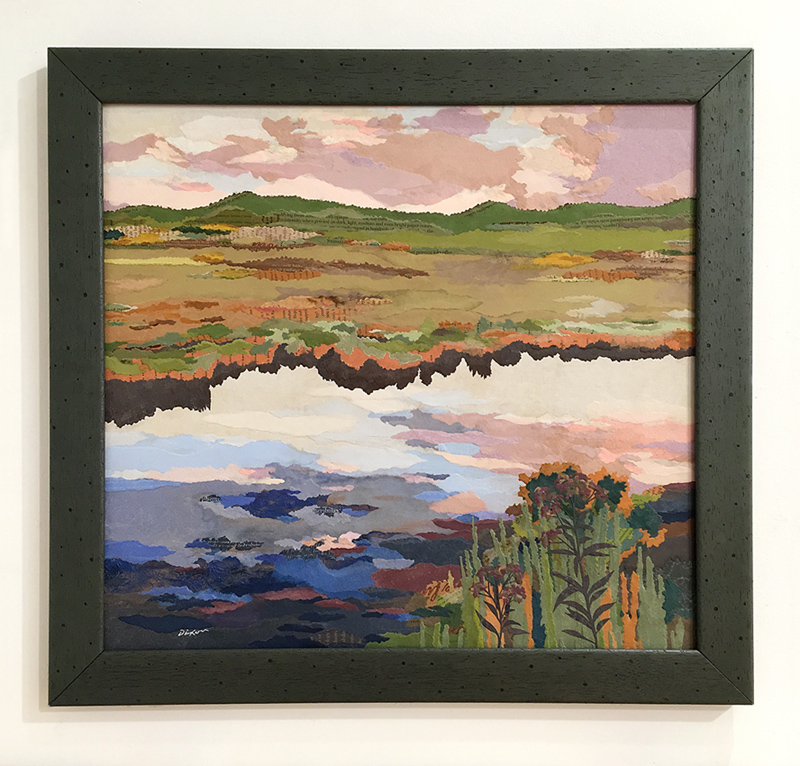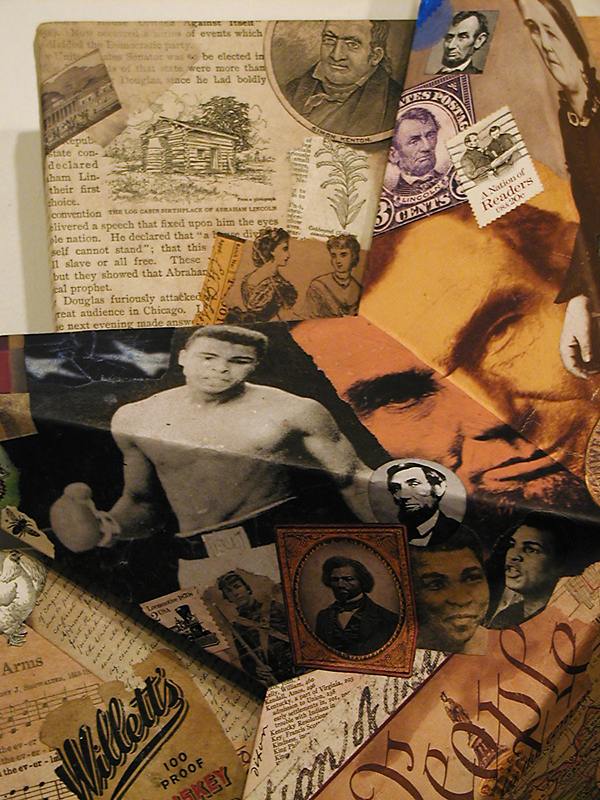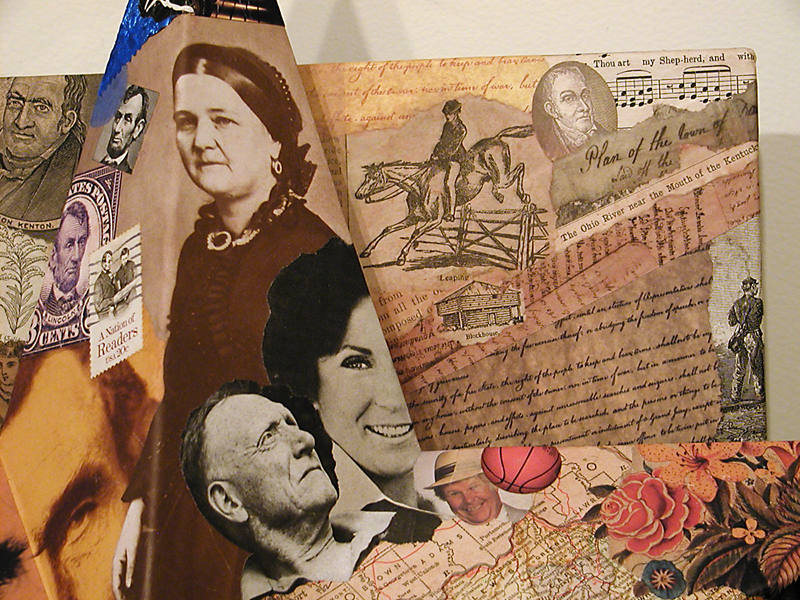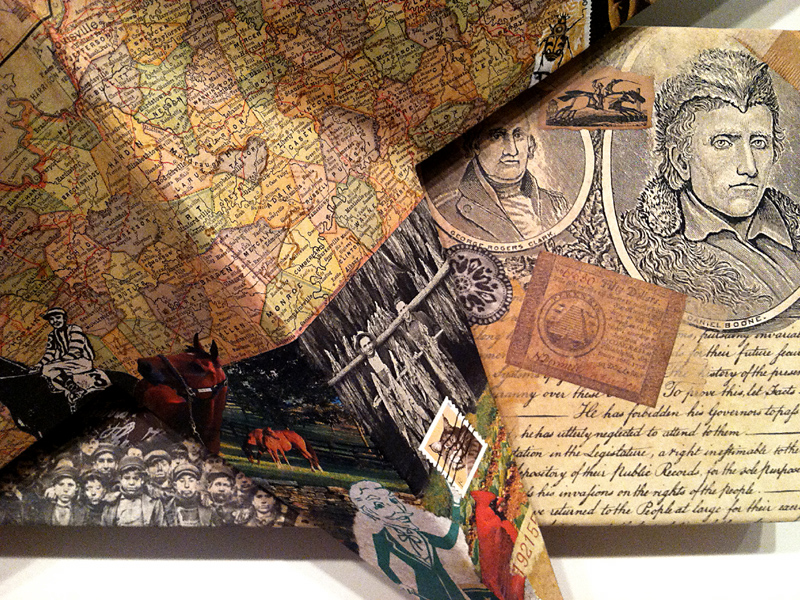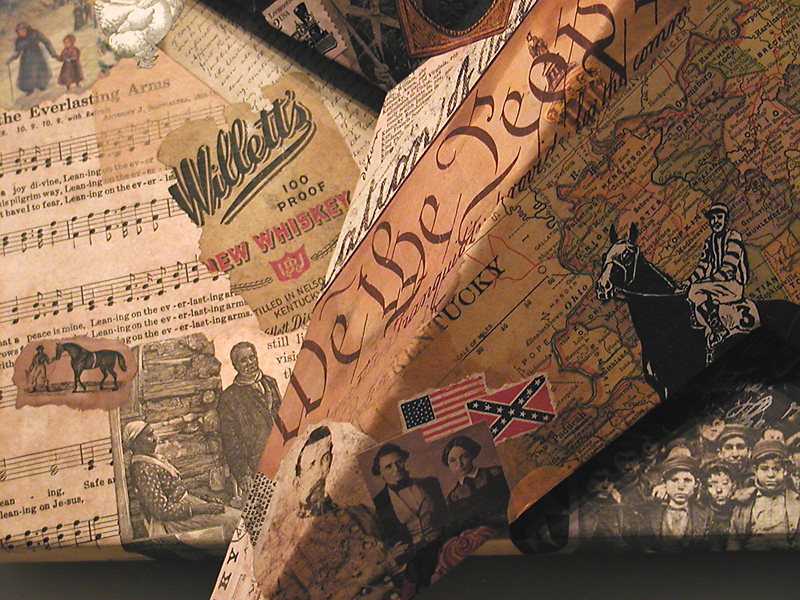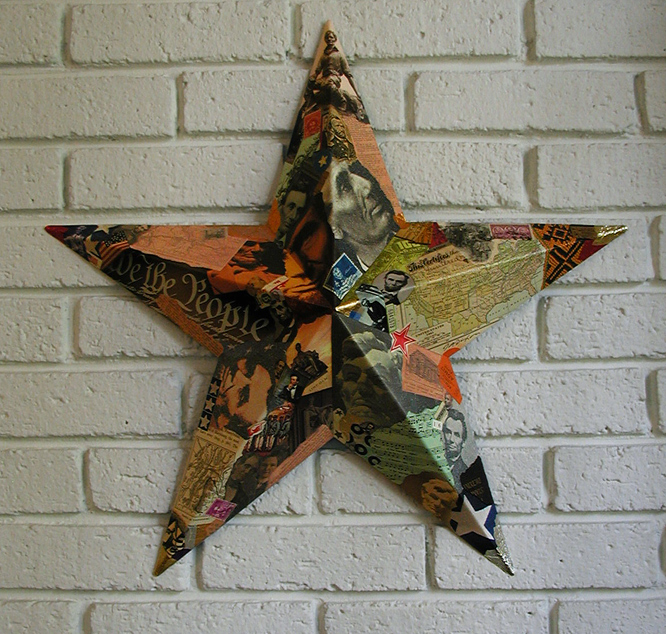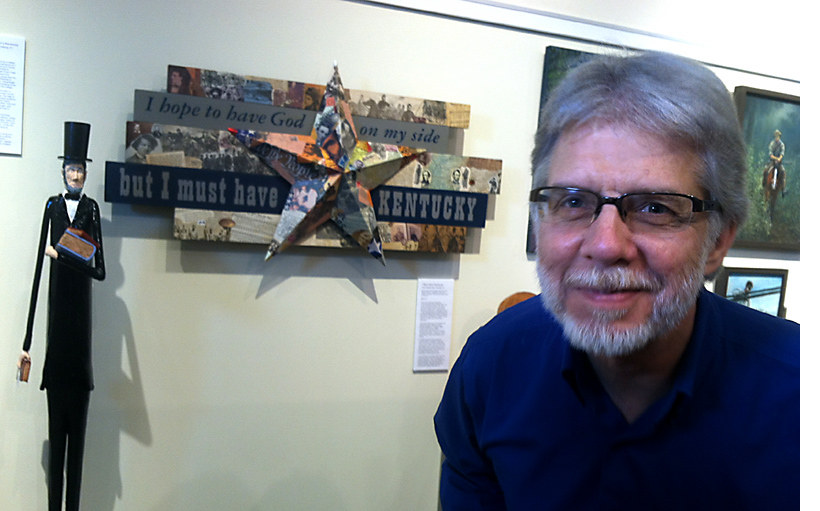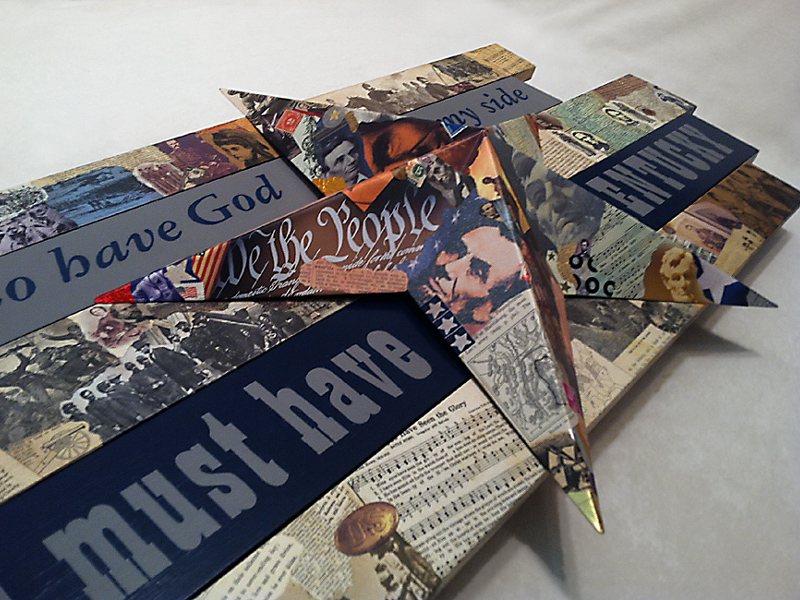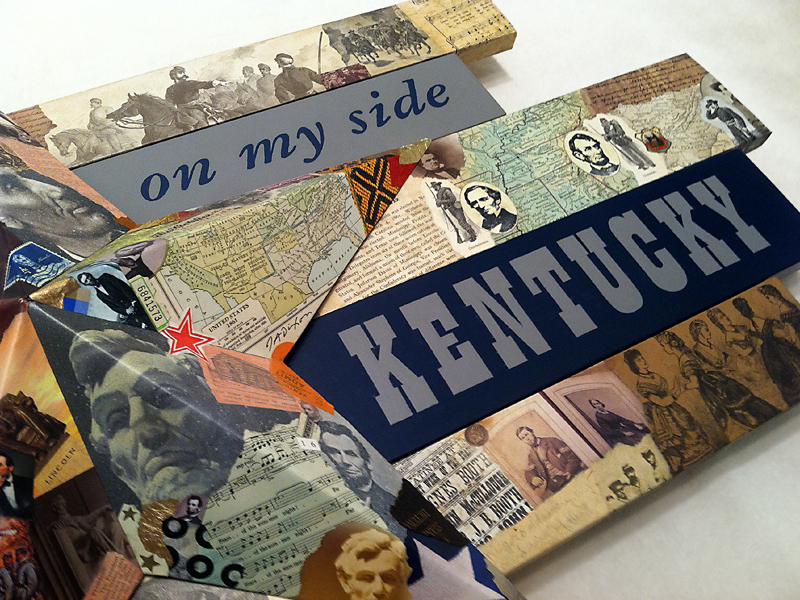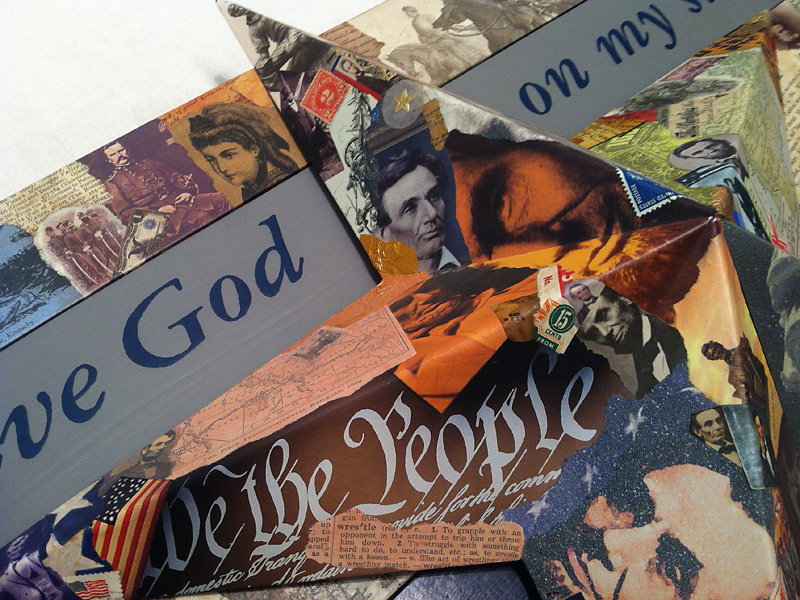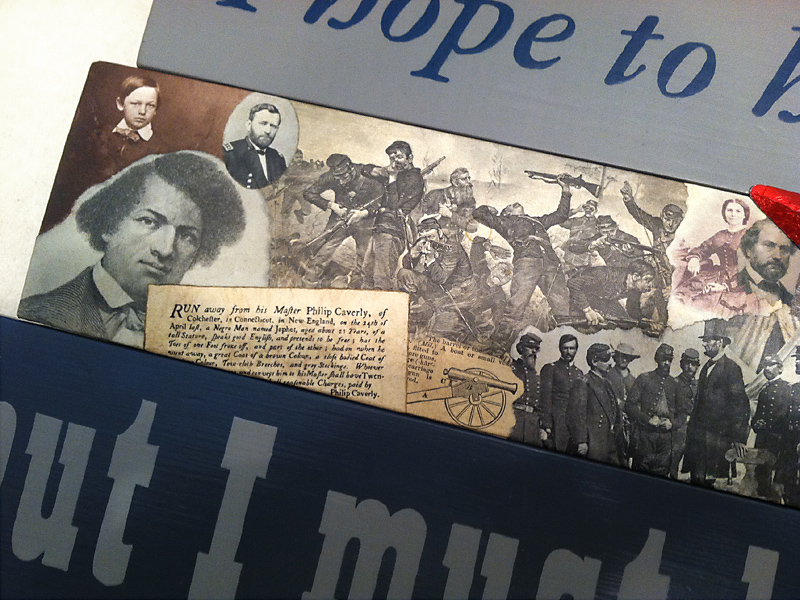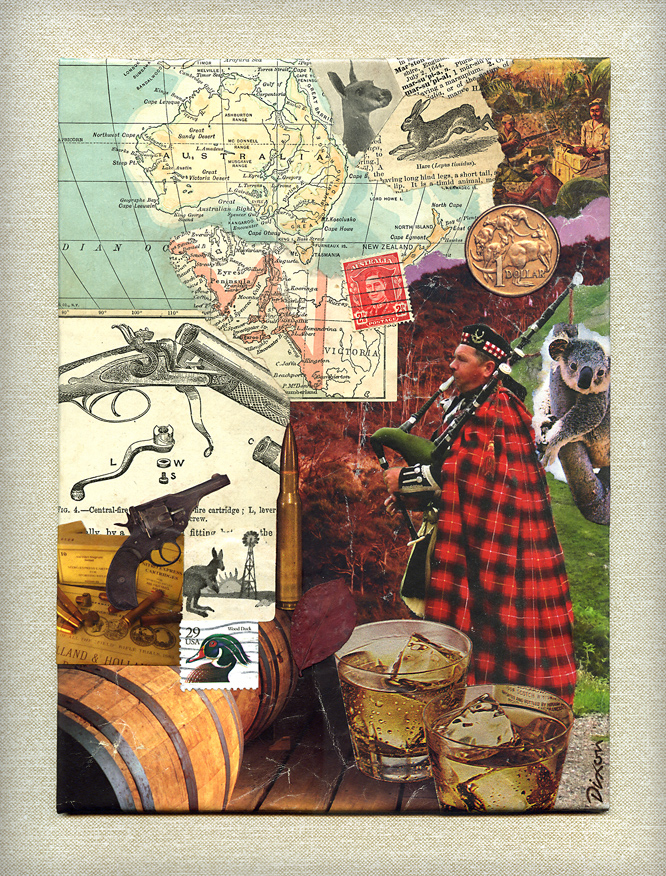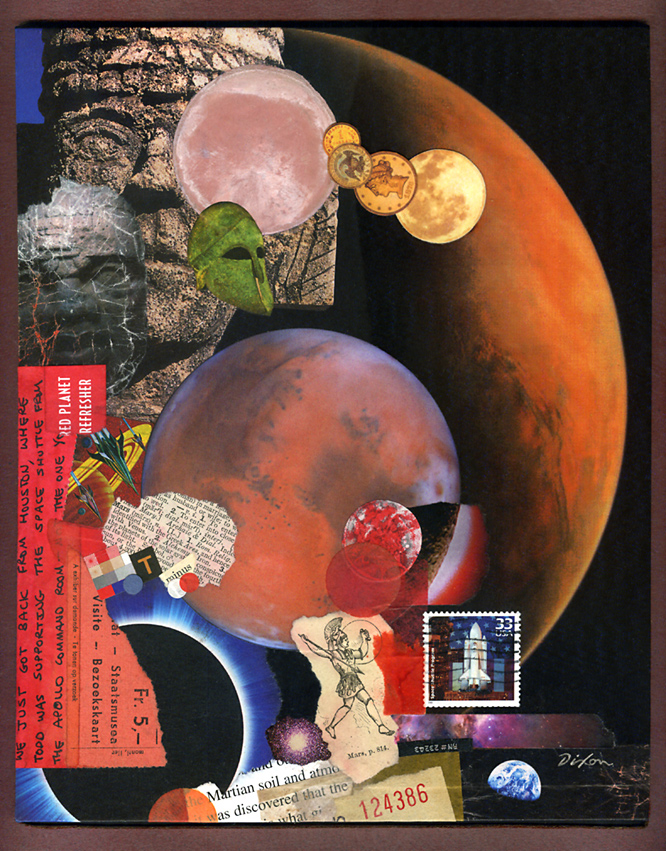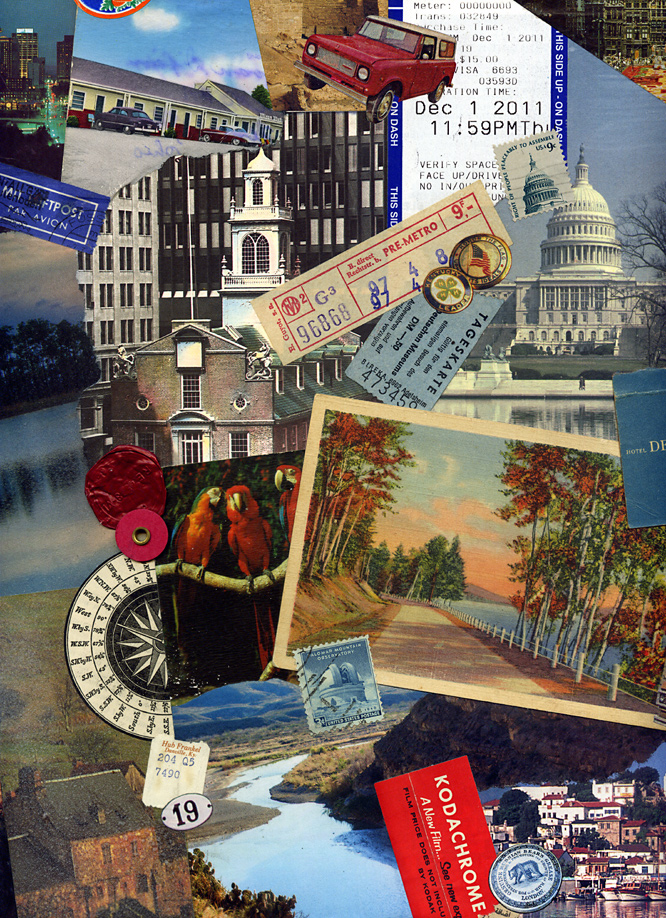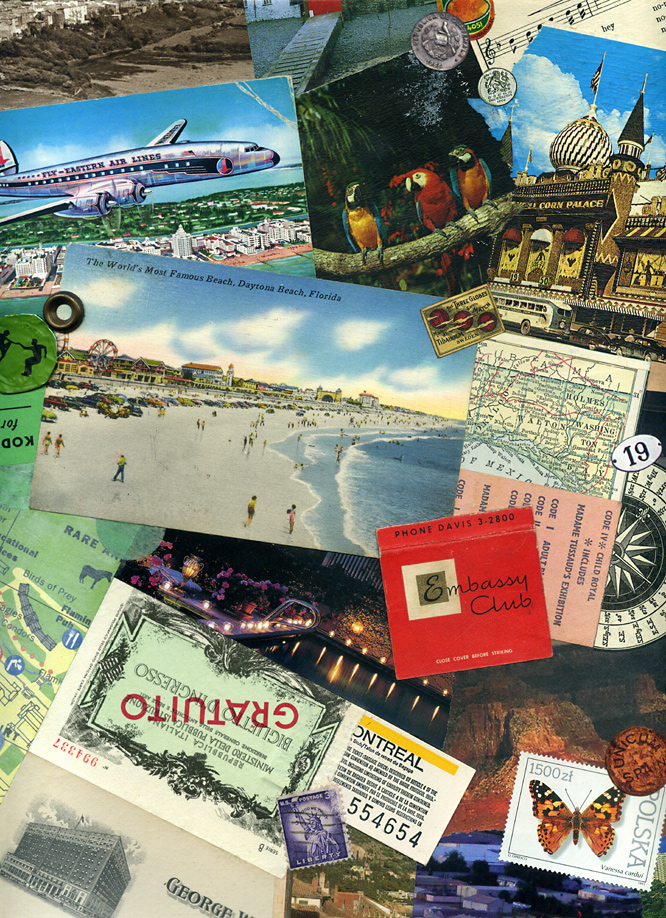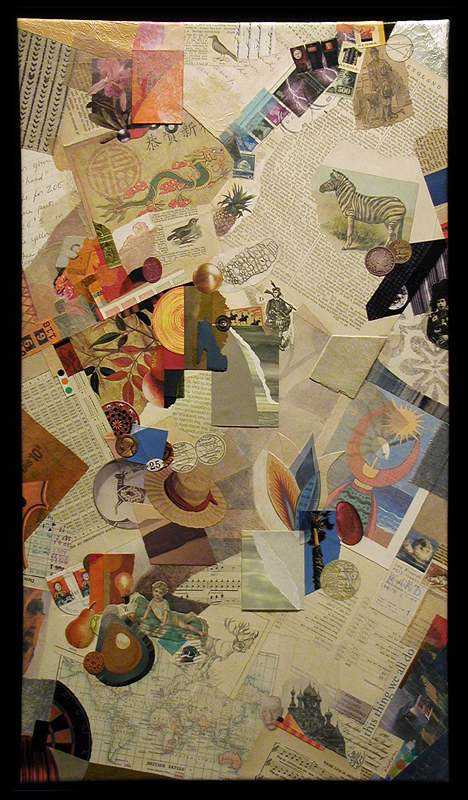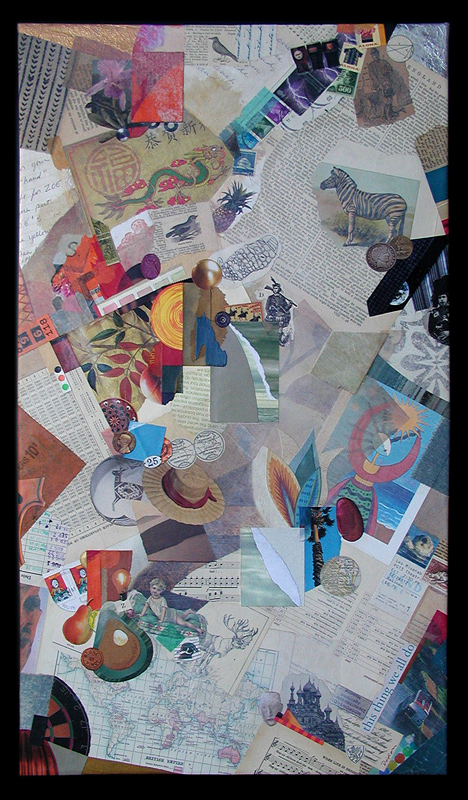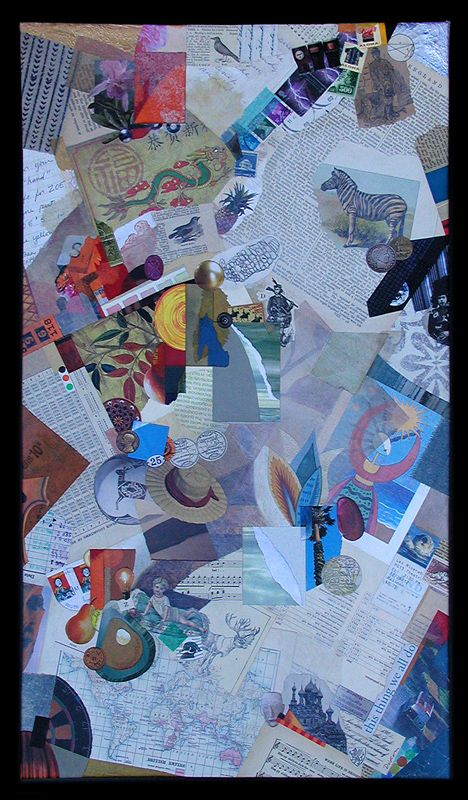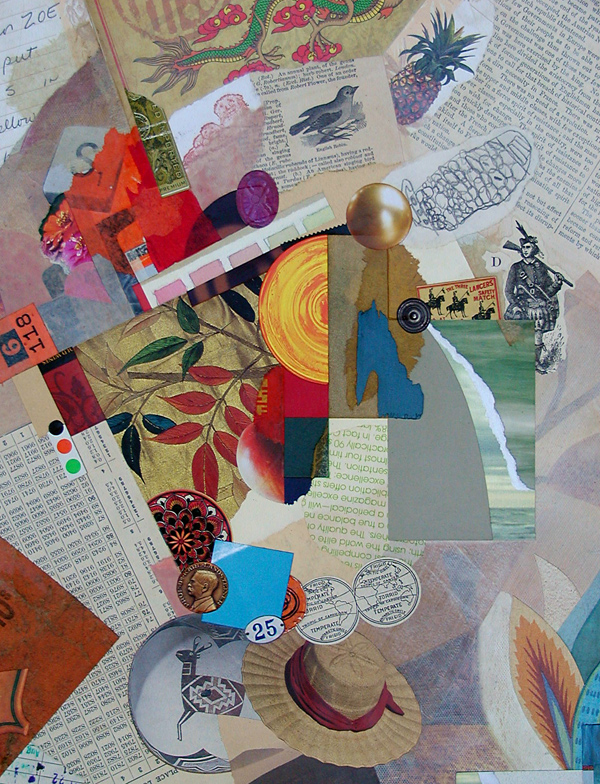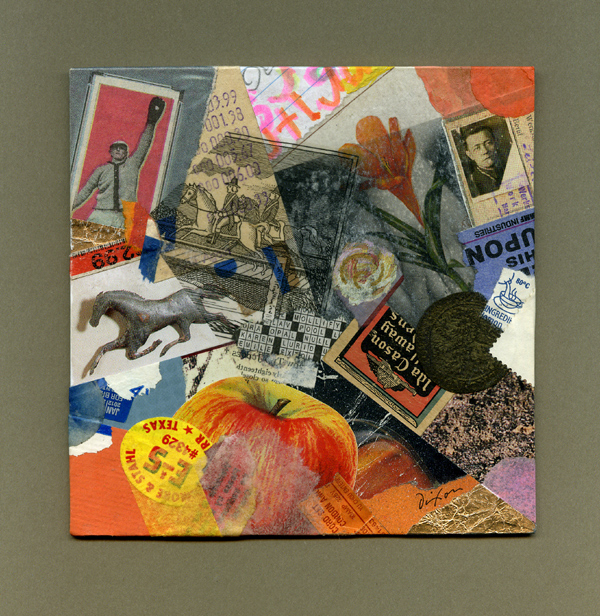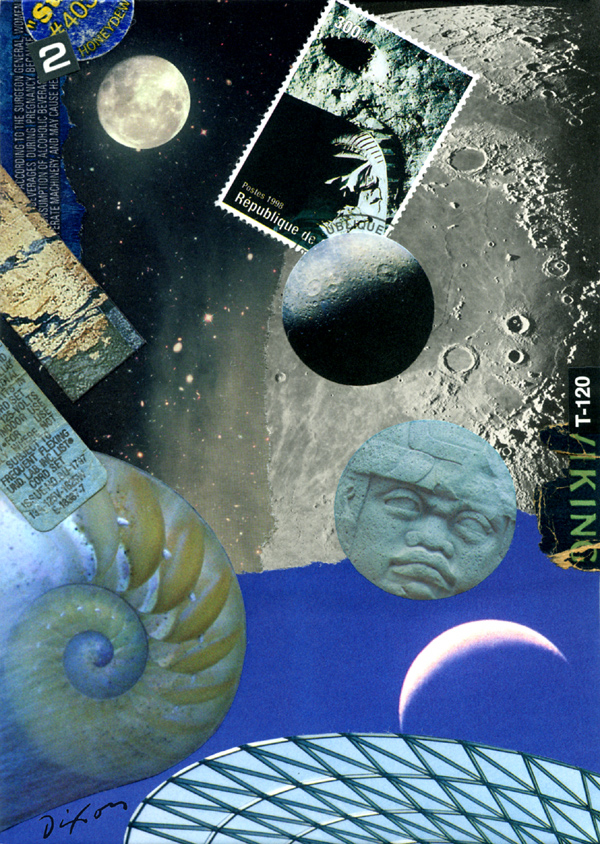“As an art of its time, collage art — its imagery, its techniques, its attitude — speaks to our confrontation with a fractured multifarious image of the world in an age of information overload. The activities of sifting, sorting, organizing and prioritizing has become the basis and the goal of artistic activity in this hummingbird era of ADHD”
— Cecil Touchon“A light bulb in the socket is worth two in the pocket.”
— Bill Wolf
Categorization is integral to the practice of collage. It is part and parcel of the ongoing acquisition, storage, and retrieval of compositional ingredients. I doubt if there is a dedicated collage artist out there who does not possess a particular method of processing the studio material that results in a work of art. We do relish the hunt, and, to some degree, we enjoy accumulation for its own sake, but, more than that, we like to be able to find our stuff when we want to use it.
Not long ago, Allan Bealy brought an article about the library of Vito Acconci to my attention. Like many artists, I devised a method of classification early in life and refined it over the years, and I found benefits in developing a “morgue” according to my own “creative code” rather than adopting a predetermined system. In whatever way we catalog it, we must be able to access the ingredients we need without impeding a flow of intuitive spontaneity. My studio repository began as a few “youthful” files of tear sheets that simply caught my eye as catalytic images. With the demands of professionalism, it grew into an illustrator’s resource that spared me many a trip to the public library. It mushroomed over time and finally evolved into a collage artist’s stash, with many subdivisions (such as antiquity, language, creatures, environments, attire, icons, themes, botanicals, patterns, vintage, surreal, and cosmic).
Individualized categories also help me to organize self-perceptions of what I make, even if these “sets” or “series” make limited sense to others. Although crafting personal greeting cards continues at a significantly reduced rate, I can now look back on the life-long activity as a key practice in my transition from applied to fine arts. It has had a strong influence on how I codify work that typically begins with intuition and ultimately ends with inclusion within some sort of idiosyncratic classification.
Please examine seven images recently created for my outgoing cards (with their designated categories). Some are considered hybrids (for lack of a better term). Those with an interest can find more at The Collage Miniaturist with this link and its associated archive.
Long live John’s Haus of Cards!
BodoMason
collage greeting card by J A Dixon
series Omega/Pi hybrid, collection of W Bates
Eagle Nest Goddess
collage greeting card by J A Dixon
series Pi, collection of J Hellyer
Existunt
collage greeting card by J A Dixon
series Omega, collection of R W Breidenbach
G is for Gray
collage greeting card by J A Dixon
series Omega/Pi hybrid, collection of G Zeitz
Nurse Saw It
collage greeting card by J A Dixon
series Pi, collection of R K Hower
IcogNeato
collage greeting card by J A Dixon
series Omega, collection of J M Hoover
O Lovely Perch
collage greeting card by J A Dixon
series Omega, collection of W W Barefoot
